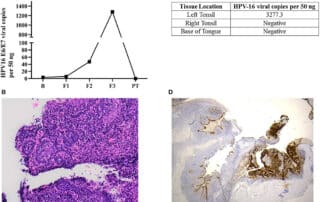Deintensification of Treatment in HPV-Associated Cancers Holds Promise, But With Caveats
Source: Targeted Oncology Date: May 17th, 2020 Author: Tony Berberabe De-escalating therapy has the potential to dramatically reshape the treatment of patients with HPV-associated oropharyngeal cancers, but only if a number of key trials come back with positive long-term data with 3 cycles of cisplatin at 100 mg/m2 times 3, given every 3 weeks, Sue Yom, MD, PhD, a professor in the Departments of Radiation Oncology and Otolaryngology-Head and Neck Surgery atthe University of California, San Francisco, said in an interview with Targeted Therapies in Oncology (TTO). Sure, there were some minor variations over the years, small alterations made on a case-by-case basis. “But long story short, that’s fundamentally what was happening: 70 Gy with 3 cycles of high-dose cisplatin,” Yom said. The story began to change a little over a decade ago, with the introduction of a variable that could potentially change the course of therapy for a large percentage of patients with head and neck cancers. Today, the operative word remains potentially. In 2008, Maura L. Gillison, MD, PhD, of Johns Hopkins University, and colleagues found that whether head and neck squamous cell carcinoma tumors were associated with the human papillomavirus (HPV) turned out to be a major prognostic indicator.1 “When that finally came to be reported, there was a very, very striking result,” said Barbara Burtness, MD, a professor of medicine (medical oncology), Disease-Aligned Research Team leader of the Head and Neck Cancers Program, and coleader of Developmental Therapeutics at Yale Cancer Center in New Haven, [...]

